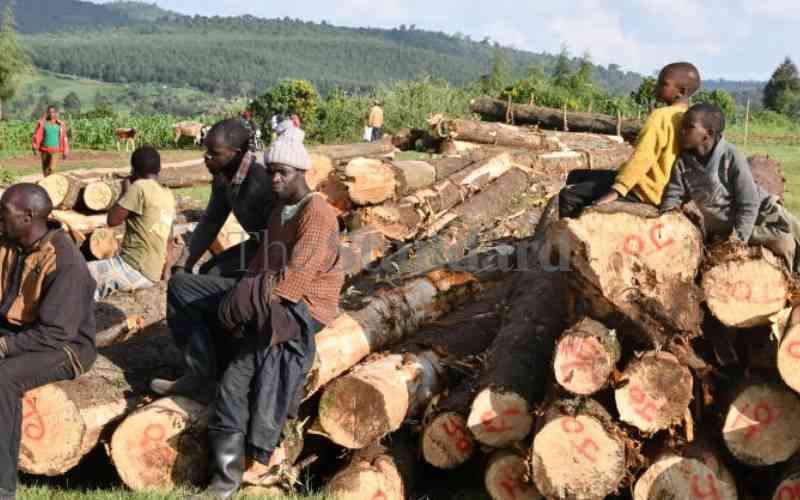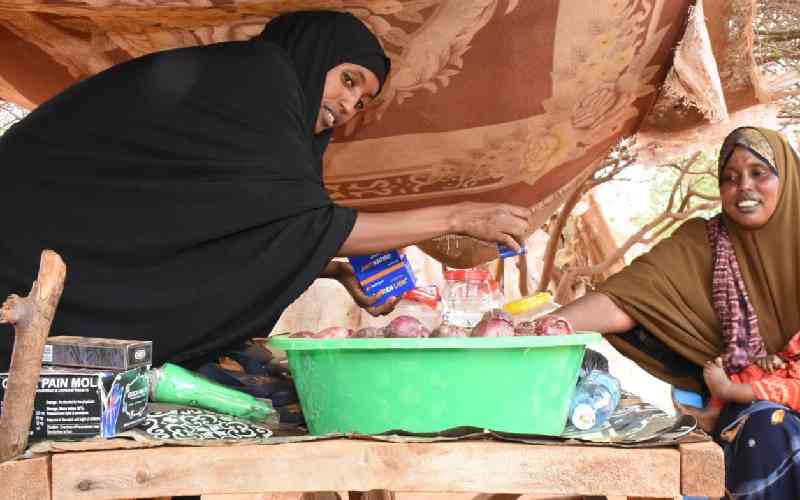By James Karuga
Makueni,Kenya:Milton Katia, a cotton farmer from Kathozweni, Makueni County, is a hopeful man. A veteran of cotton farming since 1979, he has lived the ups and downs of farming the fluffy crop for more than 30 years. But he now says things are changing.
As the Cotton Development Authority (Coda) Chairman in the larger Makueni region, he has witnessed over 80 per cent of the farmers in the last year return to cotton farming. They had abandoned the crop from 1992 after the collapse of the Cotton Board of Kenya (CBK). Prior to its collapse, CBK regulated cotton prices and provided farmers with chemicals including pesticide sprayers. The price regulations by CBK ensured farmers’ cotton was bought at a guaranteed price. But after its collapse, brokers bought the cotton at far lower prices, which fell as low as Sh15 a kilo for high quality Grade A cotton and Sh9 a kilo for Grade B.
The prices were too low to sustain the farming of the crop, which requires heavy chemical inputs to prevent diseases, aphids and borers, and the results in the field were drastic, with farmers who couldn’t get the chemicals harvesting as little as 5kgs of cotton per acre.
The result was a mass withdrawal from cotton farming country wide. But Katia was one of the few exceptions “I had seen the benefits of farming it in earlier times,” he said. Maize, the substitute crop, was also doing badly in the semi arid area. However ,when Coda was gazetted in 2006, it offered the prospect of a revival in cotton farming.
Farm information
The body brought together stakeholders that included ginneries, spinners, researchers, weavers and growers and was backed by the Agricultural Ministry. The stakeholders were to manage cotton from growing to marketing.
The fresh wave of optimism that came with the set-up of Coda spurred farmers in Makueni to enroll in workshops run by the International Cotton Advisory Committee on cotton farming. And Katia, one of 167 trainees last year, was named the top farmer from Makueni by a local farming publication. From his 3.5 acre of land, Katia went on to harvest 2550 kilograms of Grade A cotton, which he sold for Sh32 per kilo, to earn Sh81,600. He made a few more shillings by selling 28 kilos of Grade B cotton at Sh13 a kilo, but had also inter-cropped the cotton with green grams, from which he earned an additional Sh28,000.
The grand total was almost Sh110,000, on an initial investment of Sh15,000 in labour, chemicals and Hart 89 cotton seeds. Katia and another 350 Kathozweni farmers with a combined 2,000 acres sell their cotton to Makueni Ginnery, planting once a year in October and November and harvesting from April to August. In 1984, when cotton farming was at its peak, 6.5 million kilos of Grade A cotton was harvested in Makueni.
Today, Katia projects Makueni may produce 3.2 million kilos, of which 1.2 million kilos will come from Kathozweni.
The now upgraded Makueni Ginnery, which is processing around six million kilograms of cotton a year to produce 10,000 bales a year of processed cotton, each weighing 60 kilos, now accounts for one quarter of Kenya’s cotton production.
“Even now, the high costs of pest control, limited supplies of treated seeds, and difficulties in funding the buying of knapsack sprayers, chemicals and seeds, continue to act as brakes on growth,” said Katia. But now “the market is there”. —FarmBiz Africa
 The Standard Group Plc is a
multi-media organization with investments in media platforms spanning newspaper
print operations, television, radio broadcasting, digital and online services. The
Standard Group is recognized as a leading multi-media house in Kenya with a key
influence in matters of national and international interest.
The Standard Group Plc is a
multi-media organization with investments in media platforms spanning newspaper
print operations, television, radio broadcasting, digital and online services. The
Standard Group is recognized as a leading multi-media house in Kenya with a key
influence in matters of national and international interest.
 The Standard Group Plc is a
multi-media organization with investments in media platforms spanning newspaper
print operations, television, radio broadcasting, digital and online services. The
Standard Group is recognized as a leading multi-media house in Kenya with a key
influence in matters of national and international interest.
The Standard Group Plc is a
multi-media organization with investments in media platforms spanning newspaper
print operations, television, radio broadcasting, digital and online services. The
Standard Group is recognized as a leading multi-media house in Kenya with a key
influence in matters of national and international interest.








